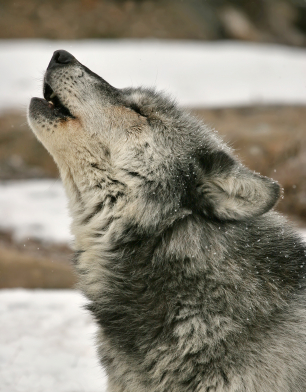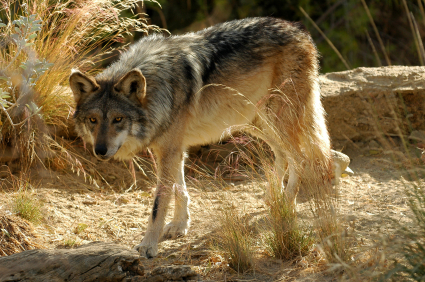
|
|
 |
||||||||||||||||||||
|
|
|||||||||||||||||||||
|
THE CALIFORNIA WOLF CENTER A Refuge in Julian, California for the Endangered Gray Wolf By Jon Deinzer  Gray wolves once roamed across the United States from the Atlantic Ocean to the Pacific, and down the the Rocky Mountains to Mexico. For decades, they were hunted to near extinction, all but erasing them from much of the country. Wolves have made a tenuous comeback, but their recovery is far from certain, and the erie melody of a howling wolf pack is known only to the select few that live in the remotest parts of our back country. Gray wolves once roamed across the United States from the Atlantic Ocean to the Pacific, and down the the Rocky Mountains to Mexico. For decades, they were hunted to near extinction, all but erasing them from much of the country. Wolves have made a tenuous comeback, but their recovery is far from certain, and the erie melody of a howling wolf pack is known only to the select few that live in the remotest parts of our back country. For those that live in San Diego’s North County, the California Wolf Center, approximately an hour’s drive just beyond the town of Julian, they have the opportunity to see wolves in their own backyard. Founded in 1977 as an observation station with a single mating pair, the California Wolf Center (a non-profit wildlife center) has evolved into an organization committed to increasing the awareness of wolves through education, awareness and understanding. This is accomplished by offering educational presentations, tours and photo opportunities. A few quick facts about wolves:
Wolves live in packs that are highly social and very disciplined. Most packs have four to nine members, but the size can range from as few as two wolves to as many as 15. It is not uncommon for packs to get as large as 30 animals, however this is rare and most times individual wolves break away from that pack to form a new unit. The California Wolf Center’s facility is home to several packs of gray wolves, including the highly-endangered Mexican gray.  Within the pack hierarchy, there are male and female hierarchies. The alpha male is dominant over the entire pack, both males and females. The alpha female and male are the only ones that breed; while the omega wolf is on the lowest end of the domination scale. Wolves communicate through body language, scent marking, barking, growling and howling. Much of their communication is about reinforcing the social hierarchy of the pack. When a wolf wants to show that it is submissive to another wolf, it will crouch, whimper, tuck in its tail, lick the other wolf's mouth or roll over on its back. However, when a wolf wants to challenge another wolf, it will growl or lay its ears back on its head. The famous wolf howl is for long distance communication to either get the pack back to its respective lair, or in case of danger to keep strangers and predators away. Much is known about these great creatures, yet much is still left to be discovered and understood. With that, the California Wolf Center - the third-largest of its kind in the United States - is a great place to begin your education, as the facility is a major participant in the Mexican Wolf Species Survival Plan (SSP). Captive breeding programs for the Mexican gray wolf are ongoing, with re-introduction into the southwestern United States a future goal.  (The Mexican gray is a subspecies of the gray wolf.) (The Mexican gray is a subspecies of the gray wolf.) The center hosts a variety of public programs, including a special “Keeper for a Day” tour, where visitors get a half-day of hands-on experience working with the wolves, or a photography tour, which will grant you access to two packs of wolves: the Alaskan and the Mexican grays. Either way, you’re certain to learn fascinating details about the resident wolves such as the fact that they have a symbiotic relationship with ravens in the wild, and that the Mexican gray wolf keeps its body temperature in check due the their large, heat-emitting ears. When visiting the center, remember that reservations are a must, cameras are encouraged, and pets of any kind are strictly forbidden on the premises. If you’d like to learn more about the California Wolf Center, or to schedule a visit, go to: www.californiawolfcenter.org |
|
|
|
|
| Site Map |